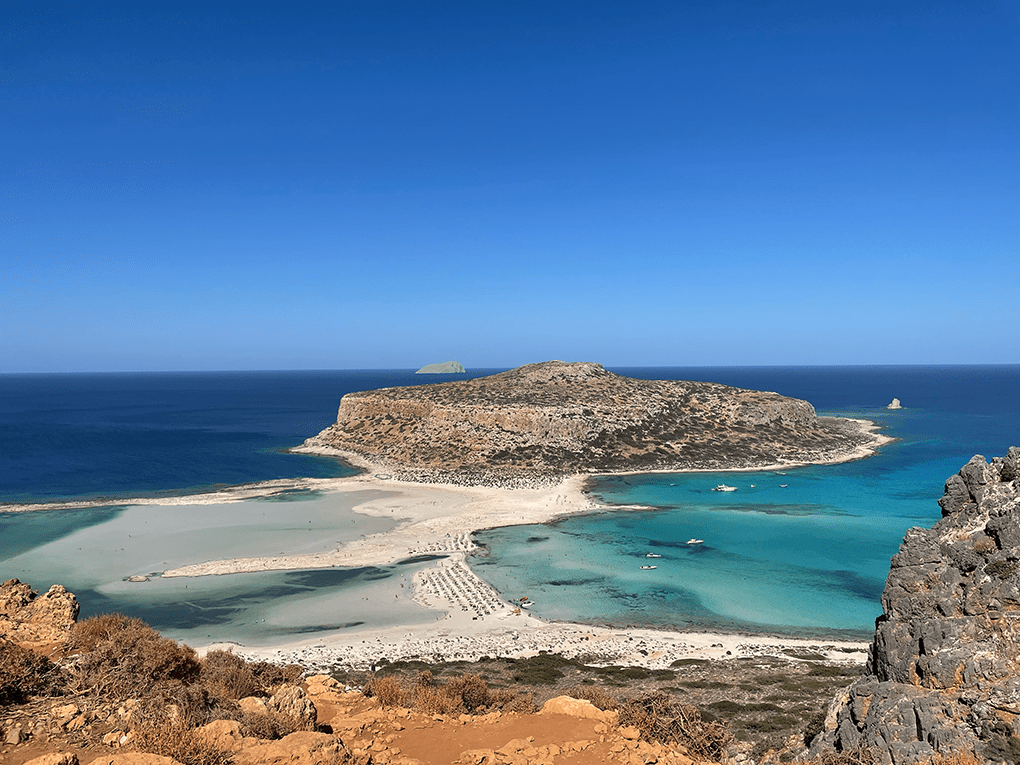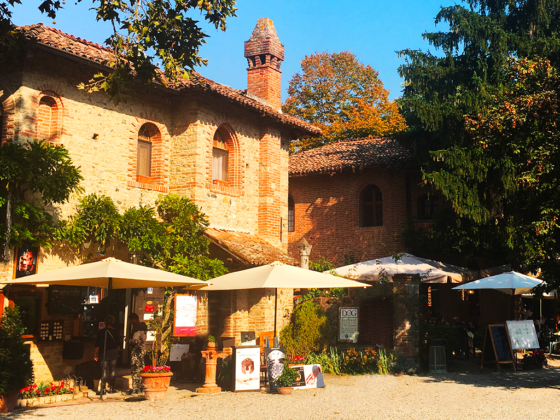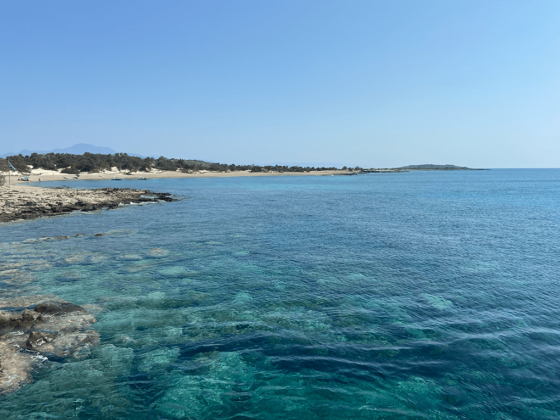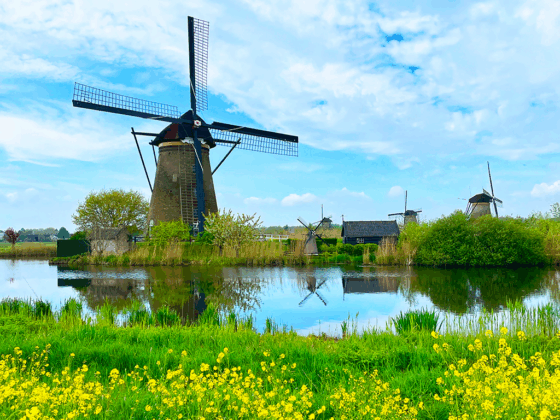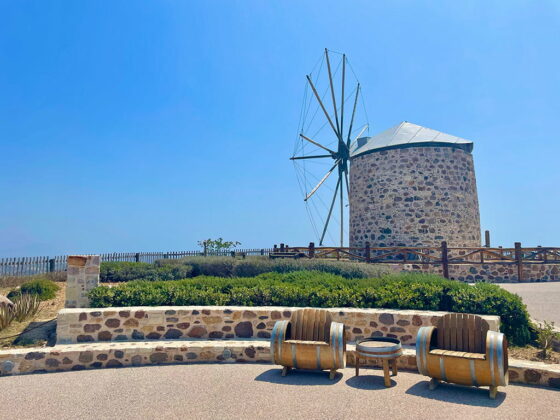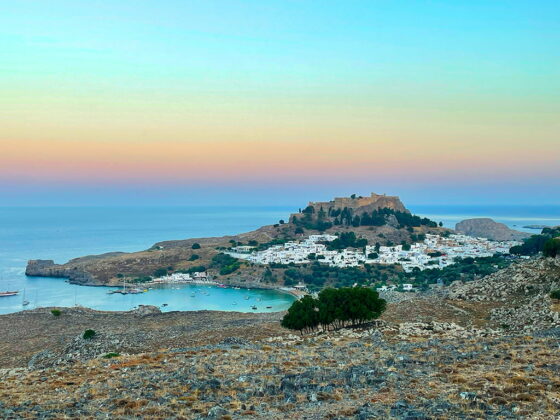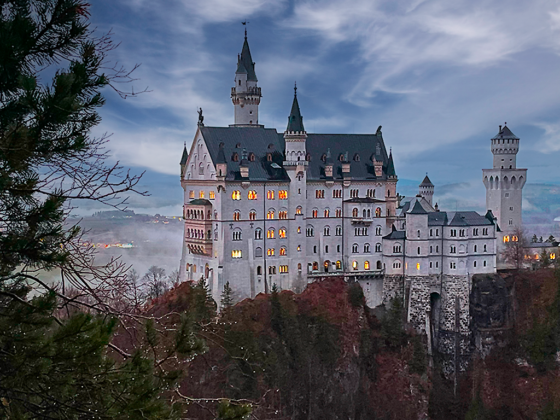The decision to spend two weeks in Crete was made during the covid period, when the uncertainty of another total shutdown was always around the corner but the desire to travel had become a need.
It was now July and there was not much time left to find a cheap solution for a summer trip. The aim was to find a compromise between a holiday in complete freedom and ‘staying safe’, avoiding the crowds of August tourism. Crete, the largest of the Greek islands, is the ideal destination for those who, like us, love holidays on the road and is the right mix of fabulous sea and unspoilt nature to be interspersed with cultural moments. Moreover, thanks to its size and the variety of things to do and places to see, it allowed us to enjoy two dreamy weeks without worrying too much.
Our expectations were fully met!
- Itinerary in a nutshell
- Day 1: Livadi Beach, Arkadi Monastery and Rethymno
- Day 2: Rethymnon Fortress and Chania
- Day 3: Seitan Limania and Kalathas Beach
- Day 4: Balos and Falasarna
- Day 5: Elafonissi and Omalos
- Day 6: Samaria Gorge
- Day 7: Chora Sfakion and Skinaria beach
- Day 8: Black Glyka and Loutro
- Day 9: Ammoùdi Beaches
- Day 10: Agiofaragos, Matala and Agios Nikolaos
- Day 11: Psychro and Knossos Palace
- Day 12: Chrysi Island and Ierapetra
- Day 13: Richtis Gorge and Vai Beach
- Day 14: Spinalonga Island and Heraklion
- Day 15: Departure
Itinerary in a nutshell
Our trip lasted 15 days.
Driving 1638 km we passed through all four prefectures of Chania, Rethymno, Heraklion and Lassithi, sleeping in Rethymno, Chania, Omalos, Chora Sfakion, Agios Nikolaos and Heraklion.
Tips for Trips: the roads in Crete – especially in the south – are often small and full of bends, without guardrails and unpaved. They cross mountains and fall sheer to the sea, in mountain villages they are so narrow that a car can barely pass. Two places that look close together on the map are not necessarily connected by a paved road, and often navigators, unable to find speed limits, indicate half the travel time actually needed.
We enjoyed the view of the most beautiful beaches – Seitan Limania, Balos, Falasarna, Elafonissi, Skinaria, Glika Nera, Ammoùdi Beaches, Agiofarago, Vai beach – walked along wild and natural paths – Samaria Gorge, Ritchis Gorge, Agiofarago Canyon – and visited Chrysi Island. Read here our ranking of the 5 most beautiful beaches and find out how to get there.
Despite the particular period – and wanting to avoid crowded places as much as possible – we wanted to dedicate a few days to the major sites of interest – Arkadi Monastery, Rethymno Fortress, Psycrho, Spinalonga Island and Knossos Palace.
If you are curious to find out more, here are the stages of our journey day by day.
Day 1: Livadi Beach, Arkadi Monastery and Rethymno
We land at Heraklion airport at 11:55. With our bags packed, we pick up the car and drive to Rethymno. On the way we make our first stop at Livadi Beach where we enjoy a good Greek lunch by the sea and make the acquaintance of the Cretan Raki.
In the afternoon we visit Arkadi Monastery, famous for being the symbol of Cretan resistance against the Ottomans. In 1866, almost 1,000 Greeks took refuge in the monastery. After three days of siege, in order not to surrender to the Ottomans, they decided to sacrifice themselves by exploding barrels of gunpowder, causing heavy losses to their enemies. The monastery, now restored – with the exception of the powder magazine – is an oasis of peace in the mountains.
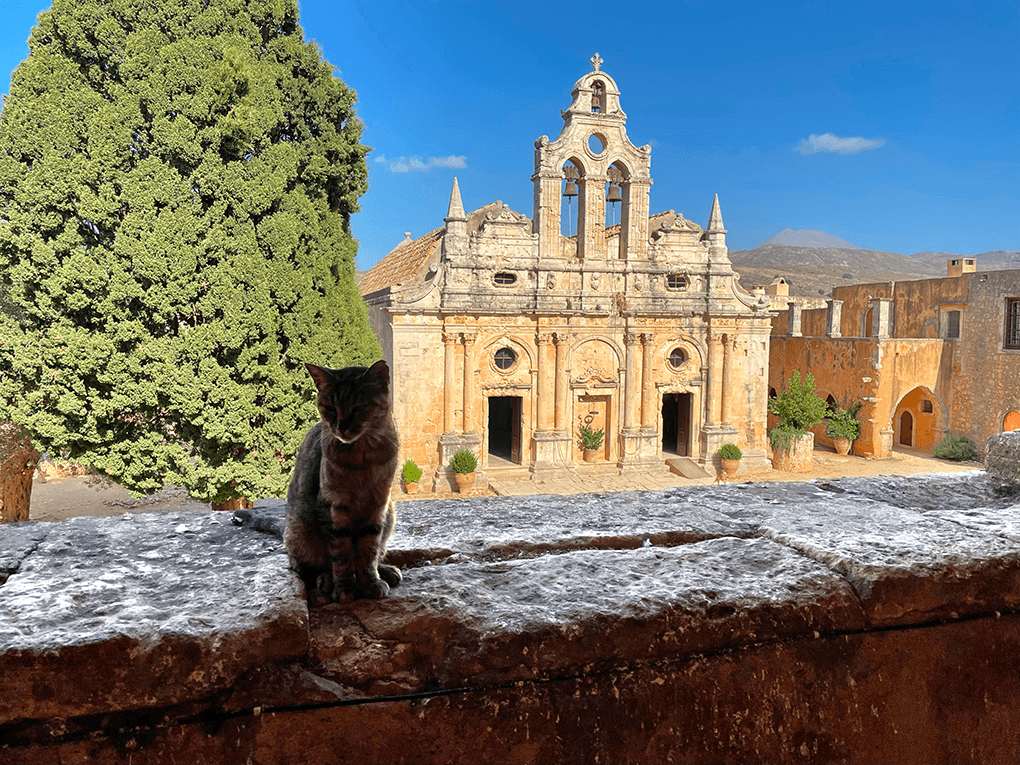
In the evening, after settling in at the hotel, we take our first tour of Rethymno with its pretty little harbour and the old town where we enjoy dinner and a stroll through the lively alleys until late in the evening.
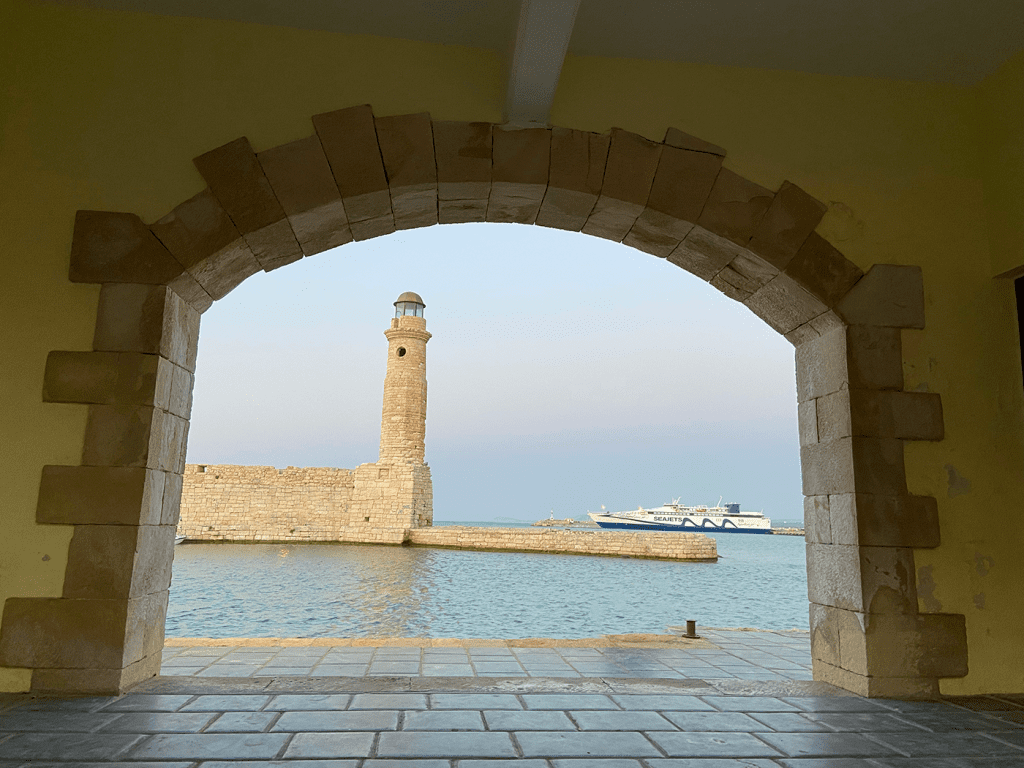
Day 2: Rethymnon Fortress and Chania
We visit the Fortress of Rethymno. It was built in 1573-1580 by the Venetian commander Alvico Lanto and designed by an engineer, Pallavicini. It stands on the site of a medieval fortress that had previously been the site of the ancient acropolis of Rethymno. Surrounded by four bastions and strong walls, its presence dominates the city. Inside were barracks, warehouses, public buildings and a military hospital. Today, the remains of the Imbraem Chan mosque, a Venetian church, some warehouses and cisterns remain.
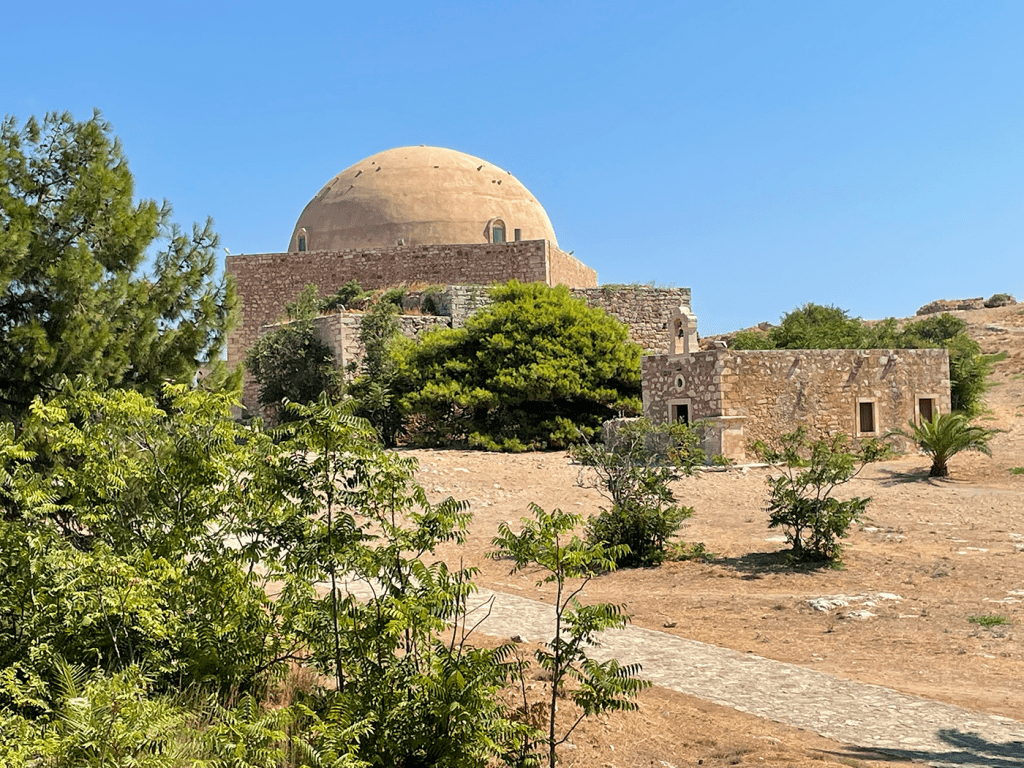
Once the visit is over, we walk down the narrow streets of the centre, full of flowers and bright colours. We stop for a good lunch in one of the many taverns that are filled with tourists.
In the afternoon, we move on to Chania. The old town is a labyrinth of narrow streets winding in all directions where you can stroll among mosques, orthodox churches and converge on the characteristic Venetian harbour. Beyond the harbour you can admire the Lighthouse, the symbol of the city. This imposing tower is also called the ‘Egyptian Lighthouse’ due to its reconstruction in the 19th century by the Egyptians. The Firkas Fortress, where there is the Maritime Museum and a small open-air theatre, is also prominent. On 1 December 1913, the Greek flag was hoisted over the fortress, testifying to Crete’s independence gained after more than 260 years of Turkish rule. Finally, overlooking the western dock is the oldest mosque on Crete: the Kioutsouk Hasan Mosque. Built by the Turks in 1645, the building was closed to worship after the reunification of Crete with Greece. It was later used as the seat of various administrative offices and was recently restored and is currently used as an exhibition space for events, fairs and exhibitions.
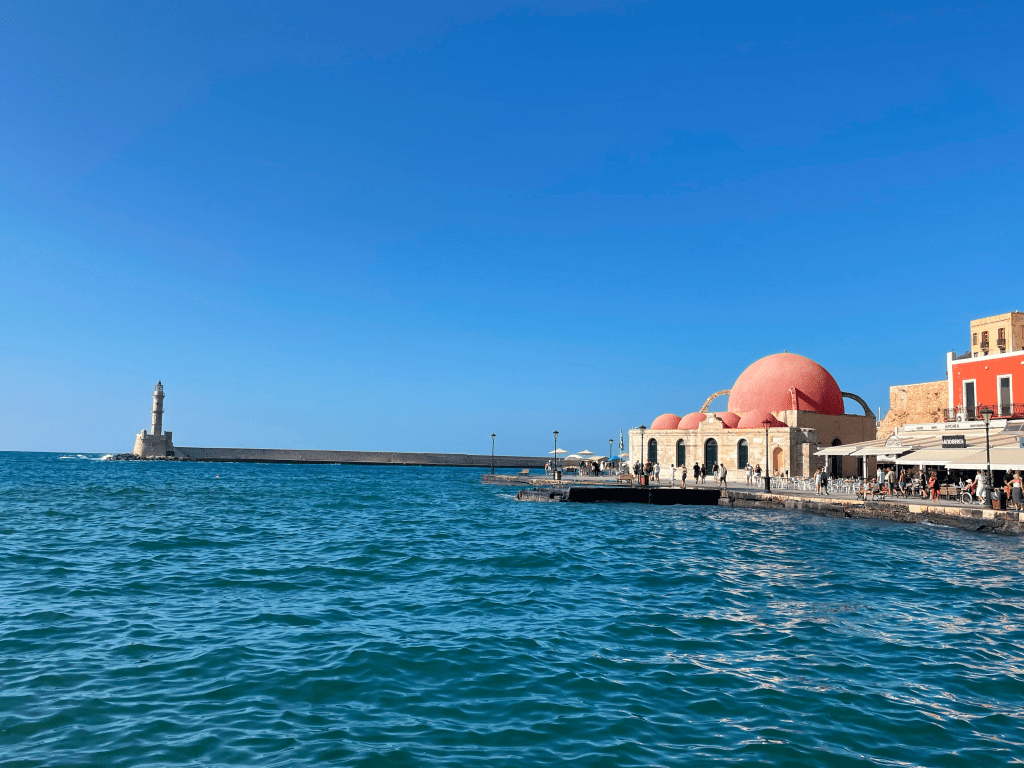
Day 3: Seitan Limania and Kalathas Beach
Early in the morning, we head for the beach of Seitan Limania (‘Port of Satan’) on the Akrotiri peninsula. The incredibly turquoise water makes its way through a crack in the rocks, creating a breathtaking natural inlet. You drive to the free car park, after an asphalt road with four hairpin bends. From there, to get to the beach, you have to ‘climb’ the rock face that encloses the valley. It is recommended to have comfortable shoes because the path is steep and rather uneven. Just be a little careful and walk along it calmly, even Paolo managed it.
Tips for Trips: there are 2 paths to the beach. We chose the one on the right because although a bit longer it was apparently less steep.
After about 20 minutes of walking we arrive at the beach and all our exertions are forgotten. What we see before us is a spectacle of nature and we are enthralled. However, the beach is small and in the late morning super crowded so we only stay for a few hours and before lunch we move on.
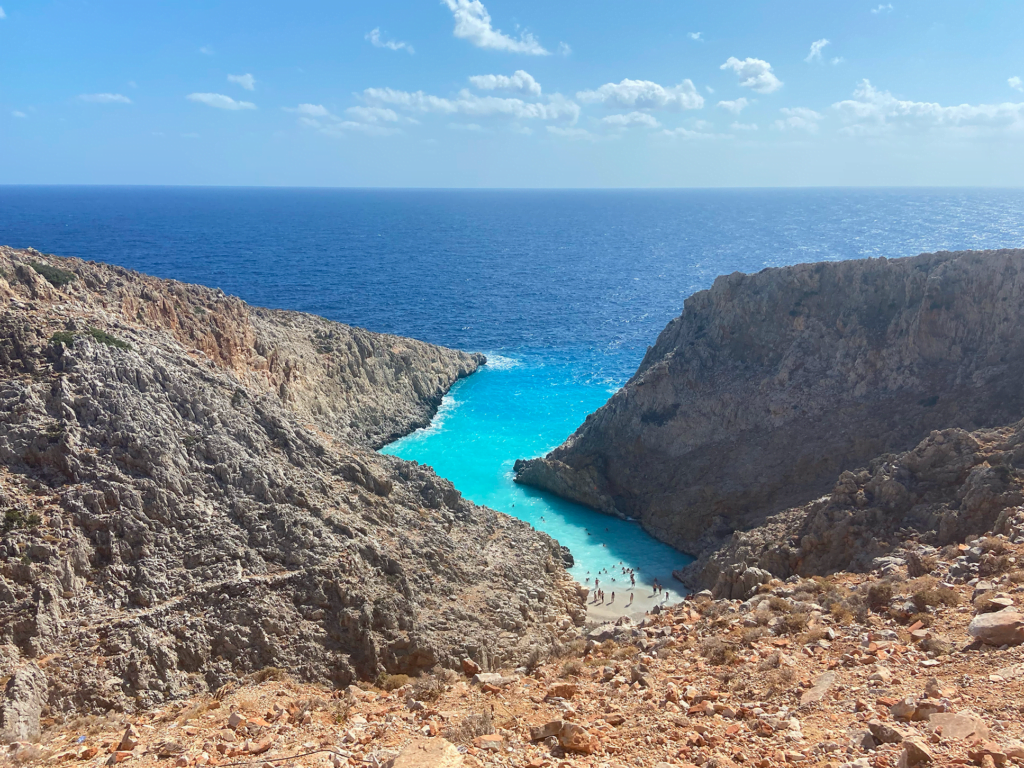
We then move on to Kalathas Beach where we have lunch overlooking the sea. In the afternoon we pitch our tent in one of the more secluded coves and relax until sunset.
Day 4: Balos and Falasarna
We woke up early and set off in the direction of Balos, the best-known beach on Crete and also one of the most beautiful: the sand is light with pink hues due to the shells, the water transparent and with many different shades due to the shape of the bay that divides the sea into small pools. We decide to arrive early to avoid the throng of tourists arriving on the ships of the organised excursions. Early in the morning, between 9.00 and 10.00, even in high season, the beach is not very crowded.
Tips for Trips: The road to Balos is unpaved and exposed in some places, with many potholes of varying depth, but it is also very wide and can be done with any car. At the entrance to the dirt road you will have to pay an entrance fee per person, and after less than 10 km you will arrive at the car park. From here you will then follow a path and a natural staircase that will take you to the beach in about 20 minutes.
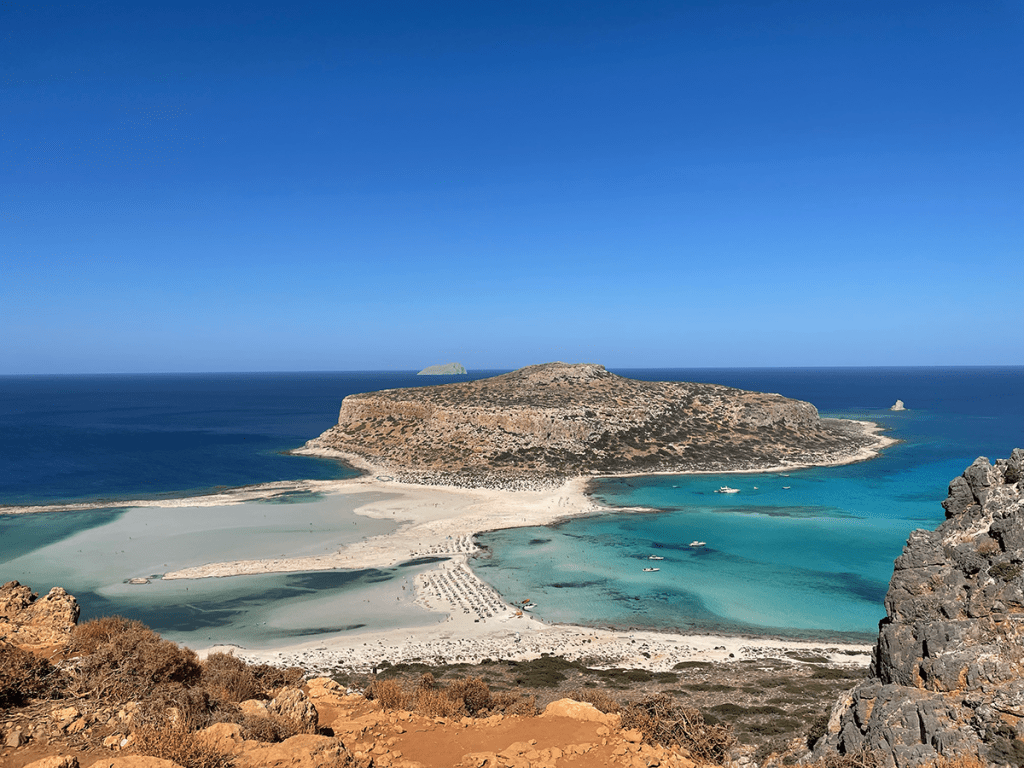
In the afternoon we move on to Falasarna. Passing the first part of the crowded, equipped beach, we find quieter bays where we can enjoy a relaxing afternoon. We pitch our tent and wait for the evening to dine in a little hilltop restaurant with a view of the bay, one of the most beautiful sunsets on Crete.
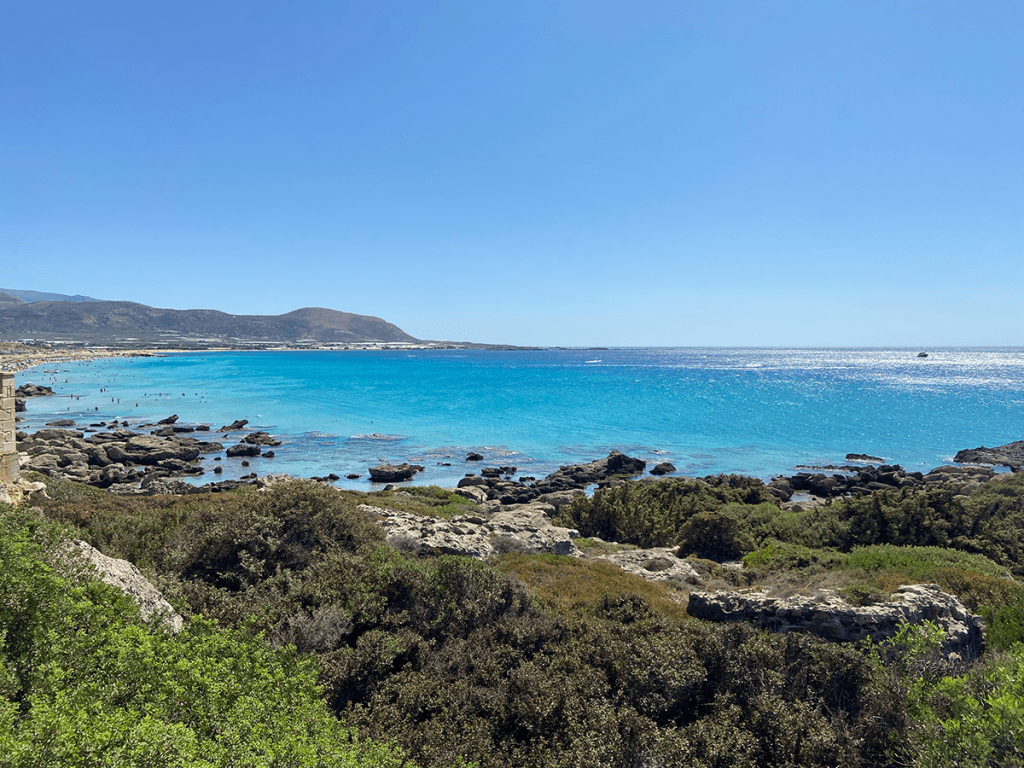
On our way back to Chania we come across the Church of Ioannis Prodromos, a rock-hewn church near the port of Kissamos. The church is located right on the side of the road and is well lit and visible when passing by.
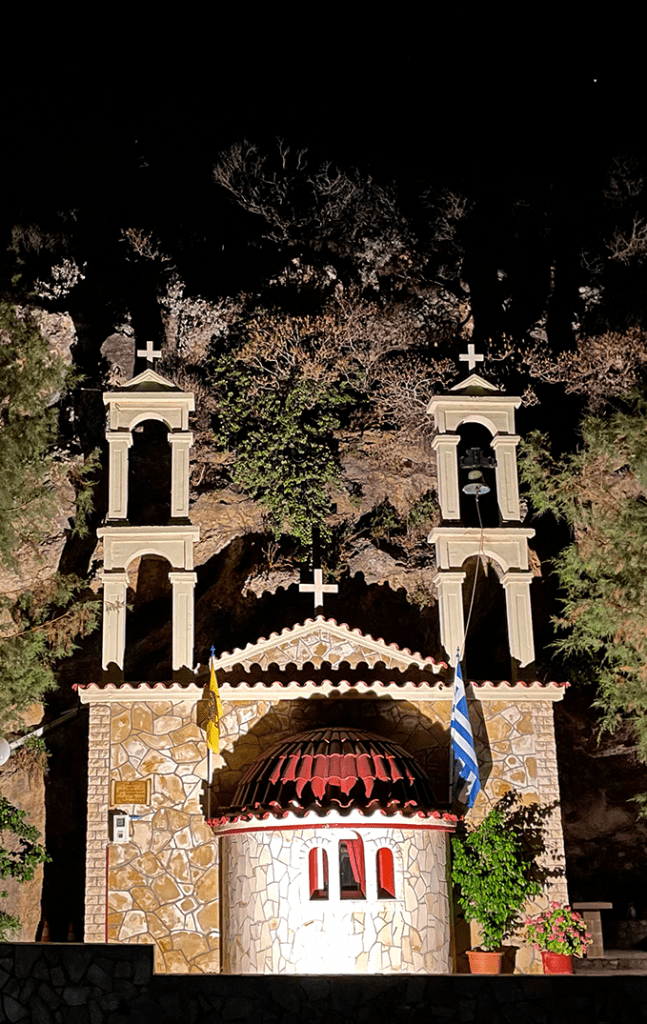
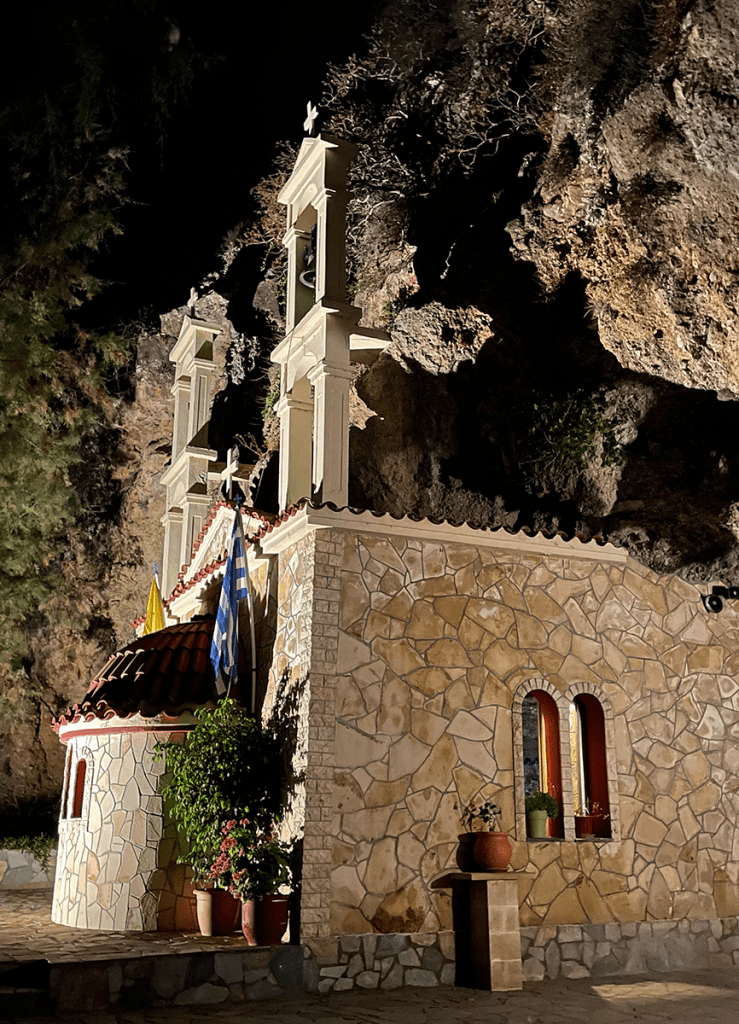
Day 5: Elafonissi and Omalos
We leave the room in Chania and head for Elafonissi: the sand has characteristic pink hues due to small shell fragments washed ashore by the sea. Just in front of the beach is the small island of Elafonissi, which at low tide is connected by a narrow tongue of sand, while at others it is a real island that can be reached by walking across the sea up to your knees. We pitch our tent and stay on the small island for the day. At the far end of the island is a promontory where there is a lighthouse and the small chapel of Agia Irini, and when you reach the top you have a beautiful view of the entire coast.
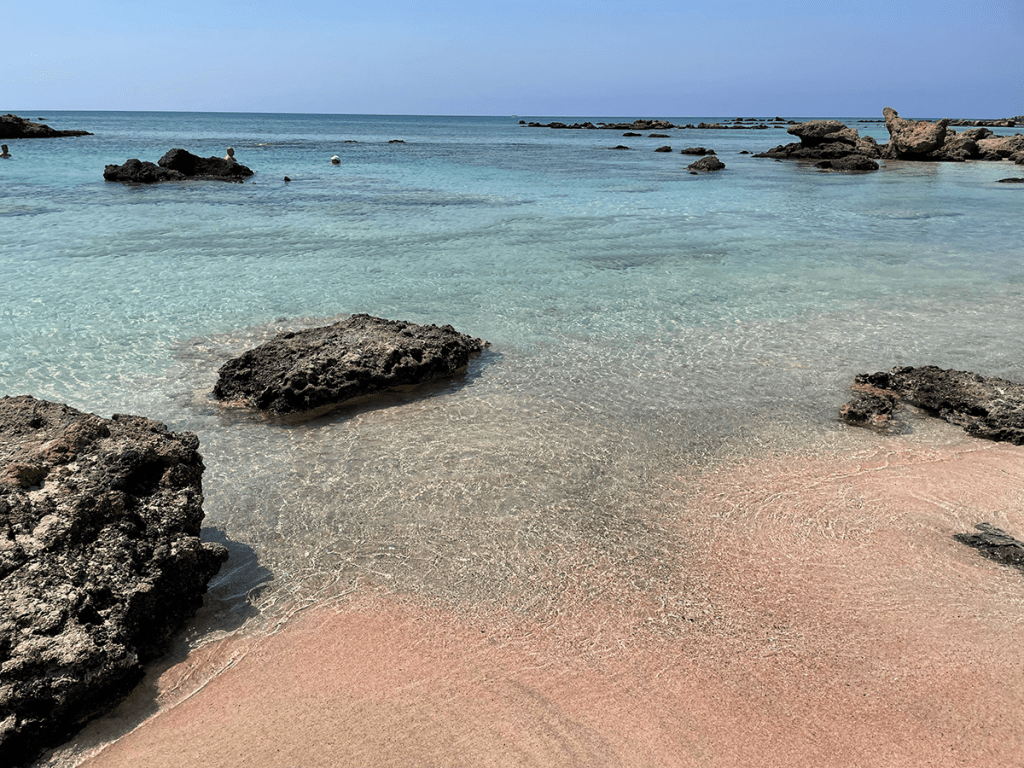
In the late afternoon, we get into the car and drive to Omalos, the road is long and winding but we are kept company by the many goats perched on the road.
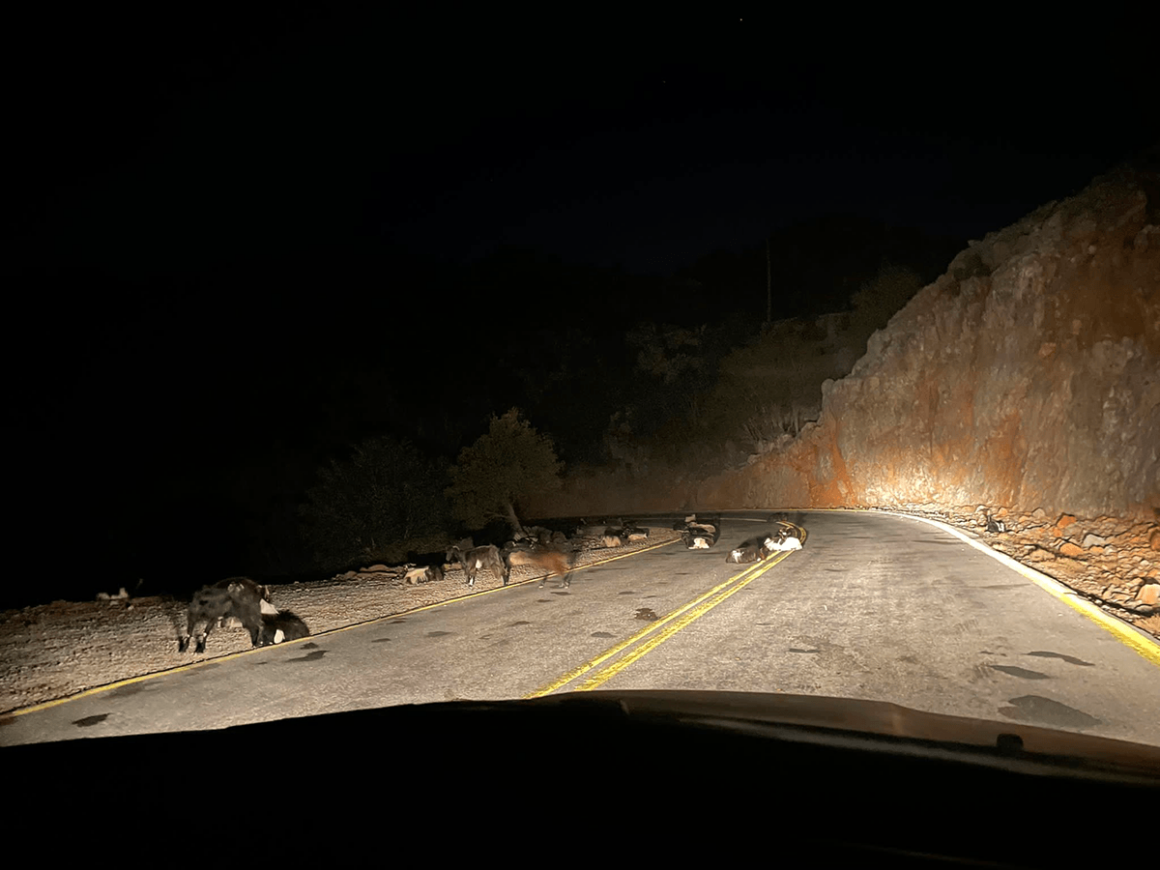
Day 6: Samaria Gorge
Waking up very early, today the most eagerly awaited excursion of the trip awaits us; we will walk through the Samaria Gorges inside the Samaria National Park. The total length of the route is 16 km – 13 km inside the park and 3 km to the port – and it starts at an altitude of 1250 metres at Omalos and ends at the beach of Agia Roumeli on the south coast of the island. The route is of medium difficulty and the walking time varies from 4 to 6 hours through extraordinary landscapes. You first walk through a lush forest until you reach the gorge: high rock walls that squeeze up to the so-called ‘Iron Gates‘, the most famous point of the path just 3 metres wide.
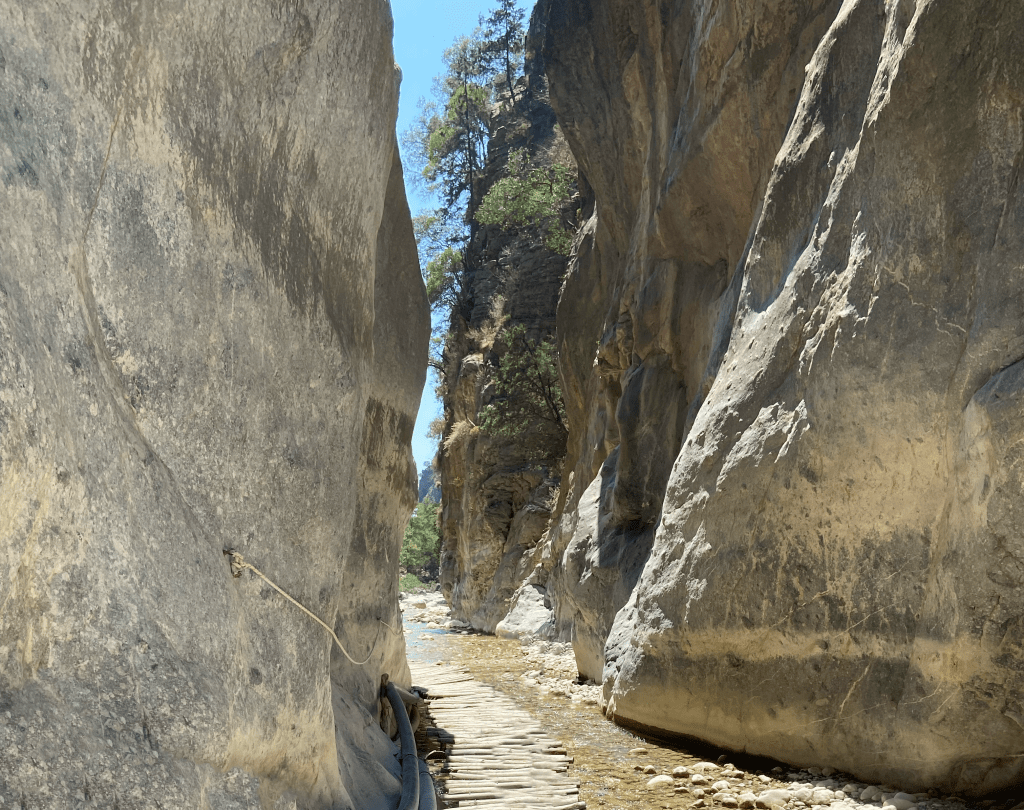
The park has two entrances, one upstream from the village of Omalos and one downstream from Agia Roumeli. Our excursion starts from Omalos so that the path goes downhill: the difference in height is concentrated in the first half of the route, where the path descends quickly to the river bed, while the second part is flat and crosses the gorge.
Tips for Trips: Inside the park there are several rest areas with benches, toilets and drinking water fountains, very useful to bring a water bottle to fill up – about twenty times at least – along the way. There is no refreshment point – except at the exit of the route downstream – bring snacks or wait until you get to Agia Roumeli where there are many taverns. Here some other tips from the official page od Samaria Natinal Park.
When we arrive in Agia Roumeli we have lunch in a taverna by the harbour and wait for the 17:30 ferry in the direction of Sougia – there are no roads connecting Agia Roumeli to the other villages on the south coast, so from here we have to take the ferry in the direction of Sougia/Paleochora or Chora Sfakion. The drive to Sougia takes about an hour and as soon as we arrive we jump on the first bus to Chania which stops at Omalos and takes us back to the entrance of the park.
Day 7: Chora Sfakion and Skinaria beach
We leave Omalos and head south, and for the next three nights we stay in Chora Sfakion, a small village with a homely atmosphere around the old marina, full of taverns open until late.
The area of Sfakia is one of the least accessible because it is surrounded by high mountains – the roads are small and steep, uneven in places – and the locals, famous for their strength and resistance to invaders, still have a passion for guns. Don’t be intimidated by the bullet holes on every surface – road signs, abandoned cars or uninhabited houses – the locals are as hospitable as on the rest of the island.
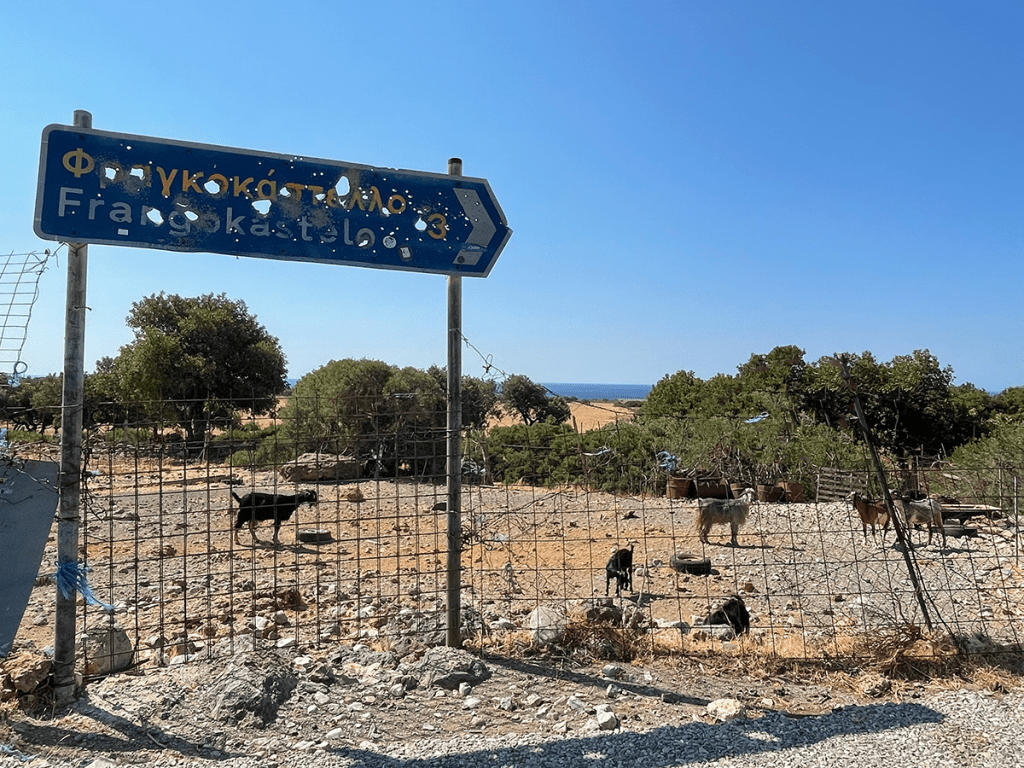
After leaving our bags in the room, we take a walk through the centre and have lunch in an all-blue taverna overlooking the sea. We then continue our journey and walk along the stretch of coast between Frangokastello, with the Venetian fortress directly above the sea, to Skinaria Beach.
It is a small beach enclosed in a natural bay between two rock formations. With crystal-clear turquoise waters, it has soft grey-beige sand and fine pebbles. The surrounding area is characterised by lush vegetation that creates a tropical landscape atmosphere. What makes Skinaria Beach stand out are its crystal-clear waters and numerous fish that have made it popular and frequented by professional divers. It is also known for its peaceful and serene atmosphere. In fact, there are few facilities in the area. The beach is accessible by car but driving to the beach is a bit of a challenge because of the narrow, bumpy road but the place is worth the effort.
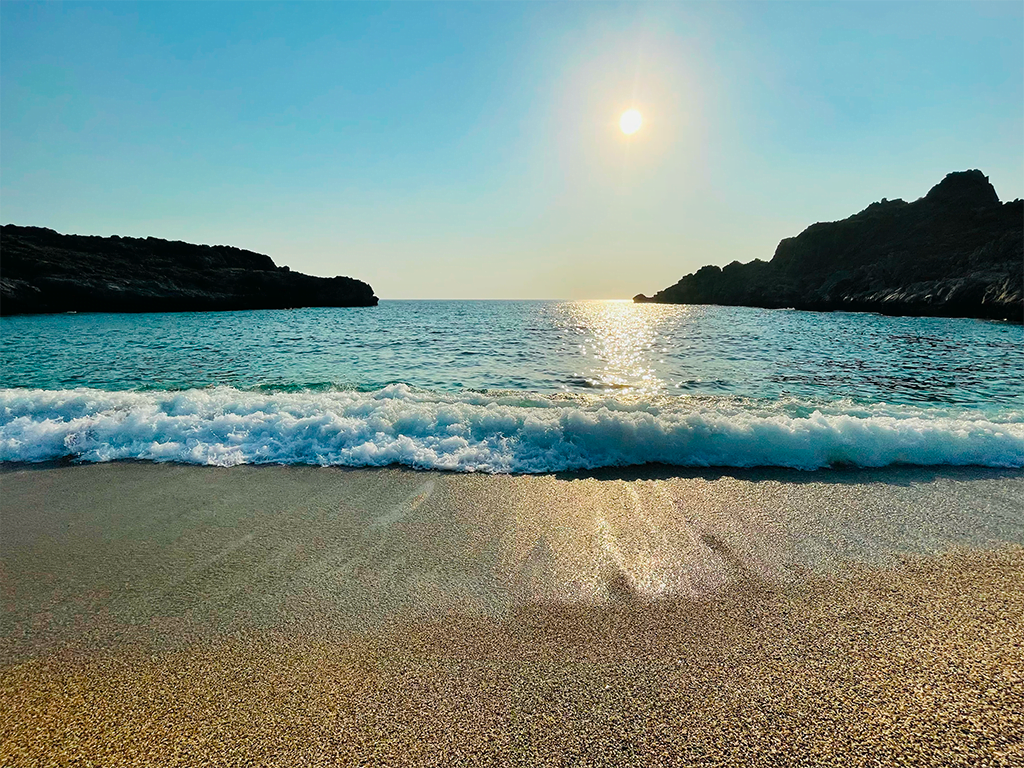
Day 8: Black Glyka and Loutro
We leave early in the morning to reach the port of Chora Sfakion, where we take a taxi boat that in 10 minutes takes us to ‘Sweetwater beach’ or Glyka Nera, a cove so called because of the fresh water that gushes out in small springs directly on the beach. The cove is very picturesque, surrounded by high cliffs and the sea is crystal clear. Despite the competition, in my opinion the most beautiful beach on Crete.
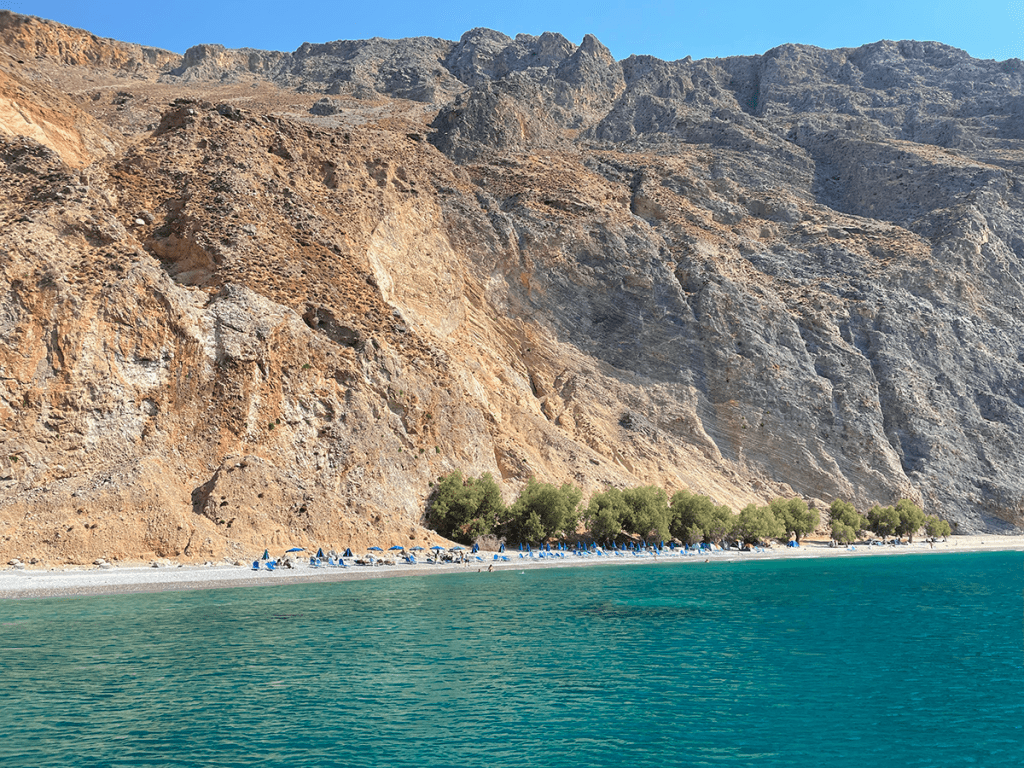
Before lunch we move on, sipping a beer in the small tavern on stilts, waiting for the second taxi boat. After another 10-minute boat ride, we arrive in Loutro, a quiet fishing village accessible only by sea or on foot. The amphitheatre-like bay consists of a promenade of white buildings, blue windows and blooming bougainvillea.
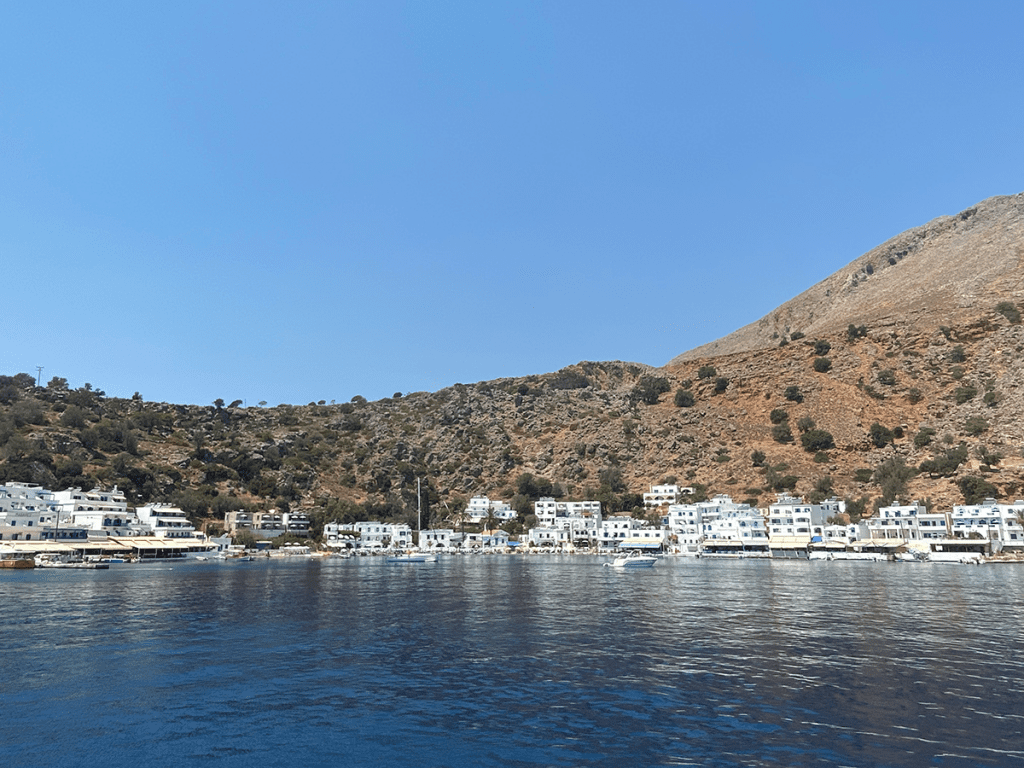
We have lunch in a waterfront tavern and spend the afternoon strolling through the narrow streets of the village, alternating between a few swims in the cool waters of the beach at the end of the village. In the late afternoon we return to Chora Sfakion by taxi boat.
Day 9: Ammoùdi Beaches
We devote the day to the coves to the east of Plakias in full relaxation: a group of beautiful little beaches called Ammoùdi Beaches. This group includes Ammoùdi beach – equipped and lively – Ammoudàki beach – frequented mainly by naturists – Damnòni – large, equipped and with several seaside tavernas – and Kleidisi – a small cove set among the rocks.
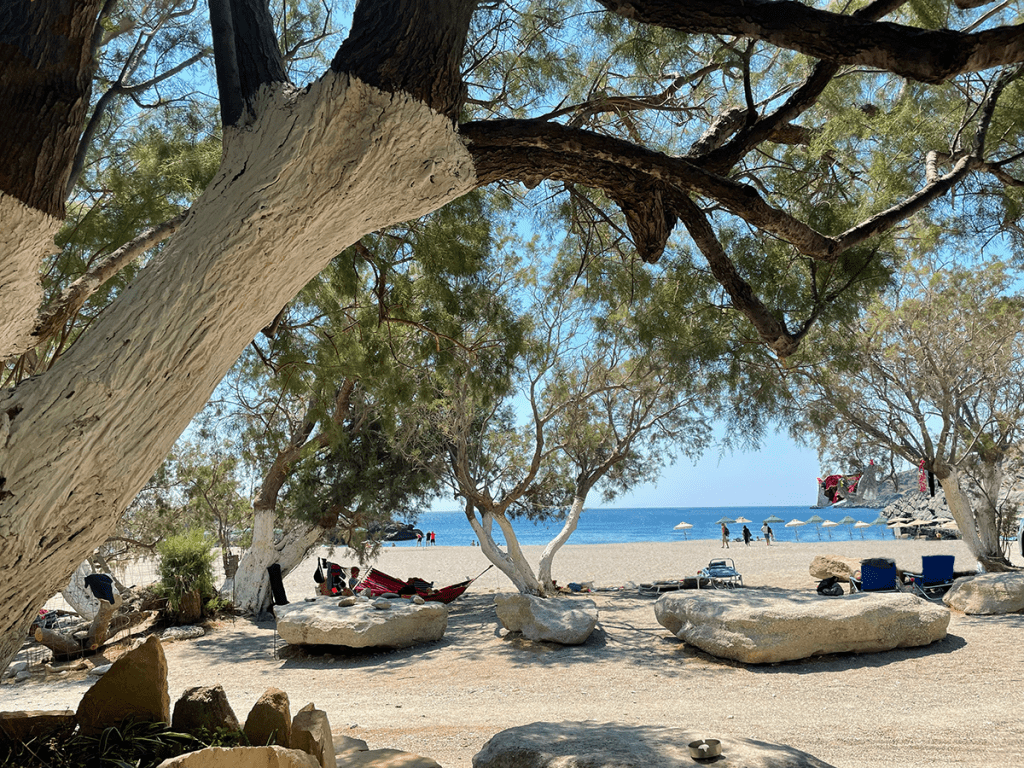
Day 10: Agiofaragos, Matala and Agios Nikolaos
The alarm clock sounds very early, the longest journey awaits us, we cross the island from west to east for almost 250 km until we arrive at Agios Nikolaos, which will host us for the next four nights.
We stop at Agiofarago, a pebble beach that opens up at the end of a canyon, surrounded by cliffs full of caves once used as sanctuaries or hermitages, the name in fact meaning ‘Gorge of the Saints’.
Tips for Trips: To reach the beach, one must initially drive along a dirt road – small and bumpy but passable by all types of cars – to a large car park. There you will find a small kiosk offering cold drinks and something to eat before venturing on to the approximately 1km-long path leading to the beach, which is not equipped and has no refreshment facilities.
The path along the gorge is very easy, winding for 40 minutes through beautiful nature but mostly in the sun. Along the way is the chapel of Agios Antonios with its bell – ringing it is said to bring good luck – and the well, the only source of water for hermits. Continuing towards the sea, on the left is the entrance to the cave of Goumenóspilios consisting of a smaller cave at the entrance and a second larger one – 9 metres high and 7 metres wide – where St Antonios lived. Continuing on, one arrives at the uncrowded beach, protected from the winds and with calm, deep blue waters. In the western part of the cove, where the coastline ends sheer at the bottom of the sea, there is a small rocky arch over the sea under which to swim.
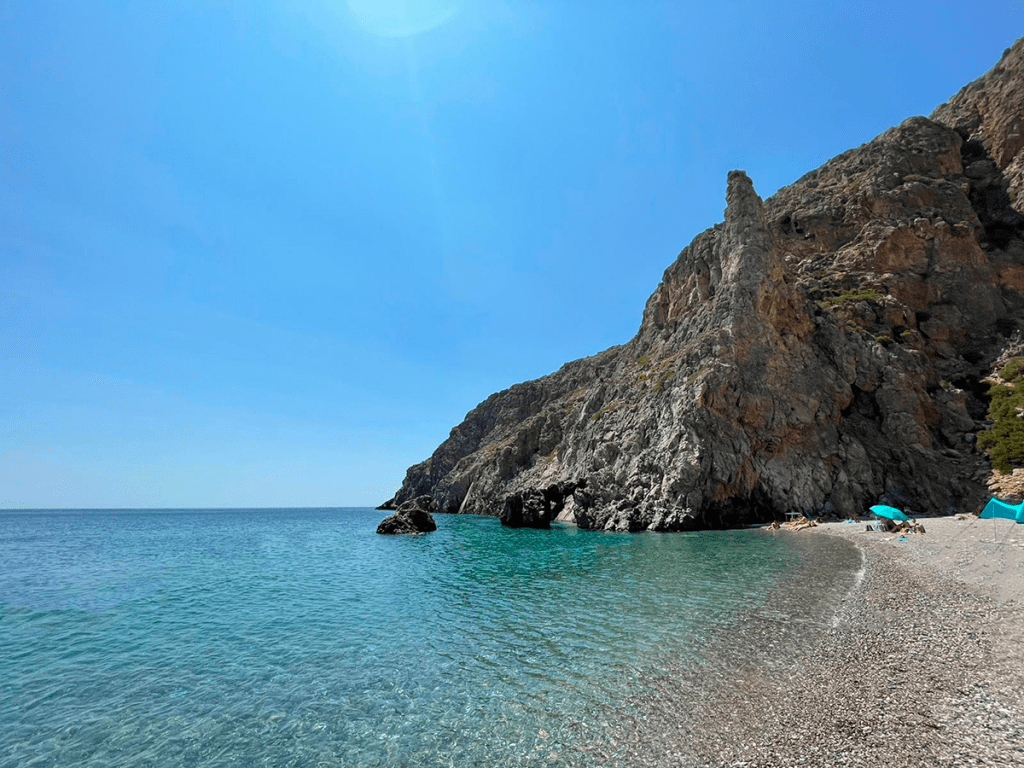
We visit Matala, the famous hippie town. In the 1960s, hippies from all over the world began living in natural caves carved into the cliffs, forming communities that also attracted the likes of Bob Dylan and Janis Joplin. Joni Mitchell even wrote a song dedicated to this period. A path over the cliffs leads in half an hour to the wild Red Beach.
On our way north, we come across a quaint little church carved out of the rock, and cross the Kotsifou Canyon, a striking, deep gash between high mountains.
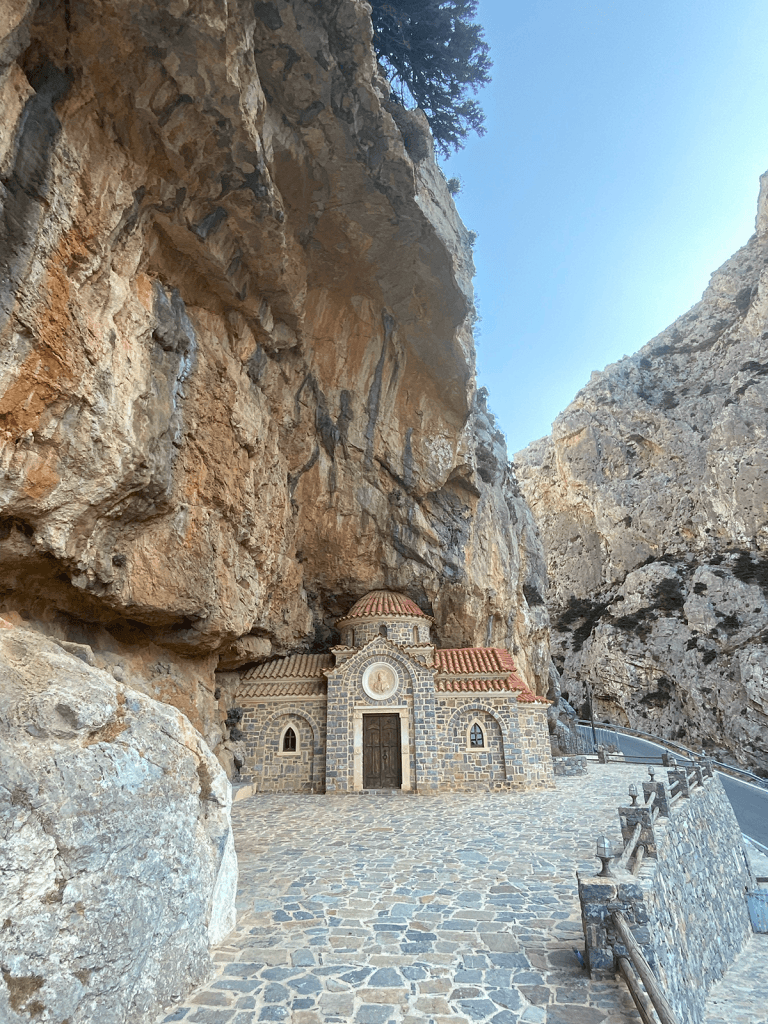
In the evening, we lose ourselves in the lights of Agios Nikolaos, a colourful tangle of bars, taverns, cafés and small shops. Its centre, especially beautiful at sunset or in the evening, opens up around the famous Voulismeni Lake, which connects directly to the sea by a narrow channel.
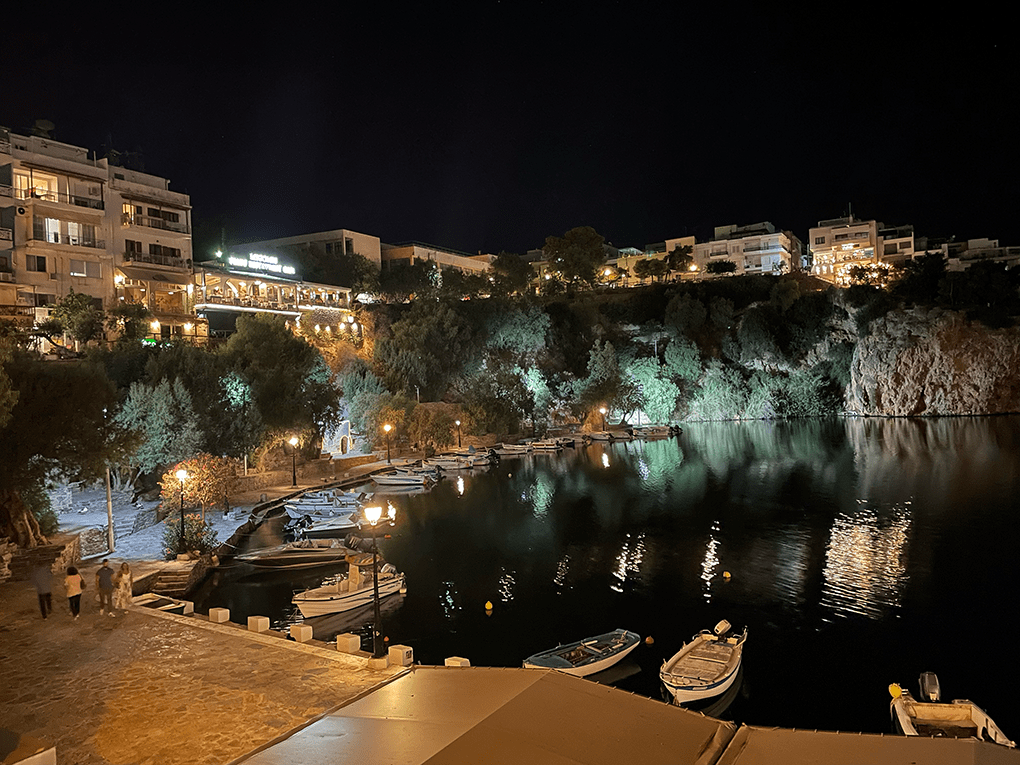
Day 11: Psychro and Knossos Palace
Because of the uncertain weather and the risk of rain, we anticipate the stops we were to make on the last day before moving on to Heraklion.
We visit theLasithi Plateau, a vast plain of cultivated fields where some of the many windmills built at the time of the Venetian occupation remain. We arrive at Psychro, the main gateway to the Diktèon Cave. According to legend, Rhea hid in this cave to give birth to Zeus, far from the clutches of her father Cronos. To access the cave, one has to walk 800 metres up a steep but shady rocky path or a paved, sunlit road from the car park.
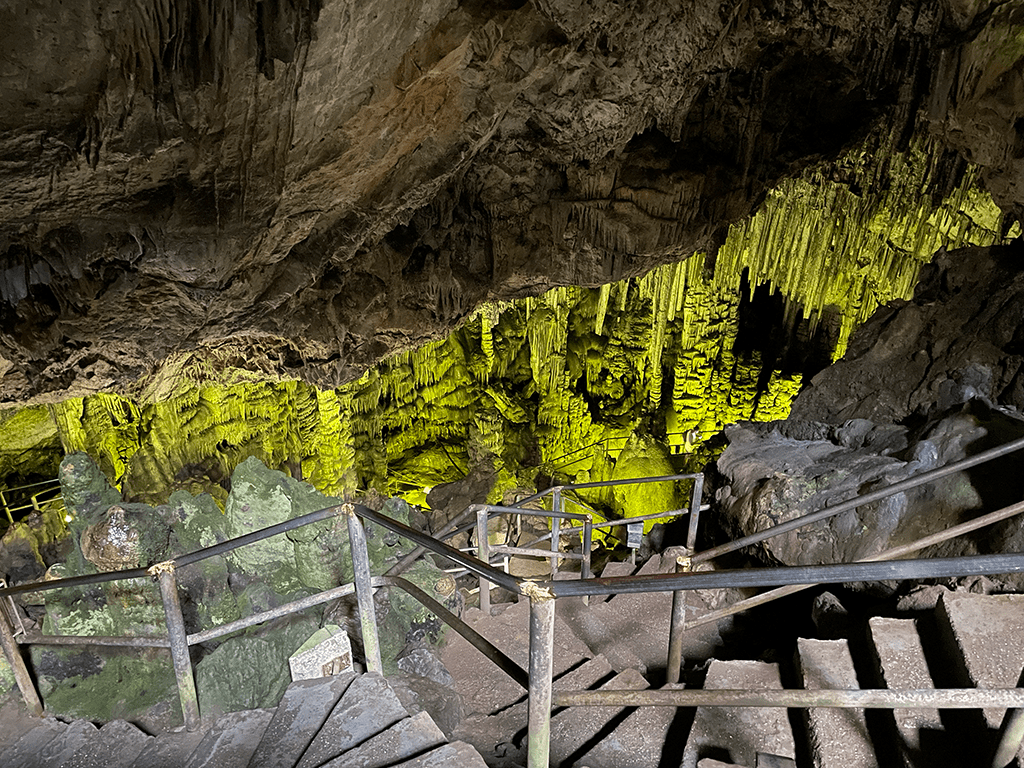
In the afternoon we visit the archaeological site of Knossos, which stands on the heights of Kefala, 5 km from the centre of Heraklion. Knossos is the largest of the Minoan palaces and besides being religious in character, it was the political and economic centre of the Minoan maritime empire. The living space comprised an area of approximately 20,000 m² with the living quarters of the king, queen and administrative officials, rooms for worship and for receptions: 1,300 rooms distributed over five floors with a very intricate layout where an estimated 12,000 people could be accommodated, the central area of which was an earthen courtyard where gymnasts performed their death-defying pirouettes on bulls, sacred animals for the Cretans, as evidenced by the numerous frescoes found in the palace.
The site, although fascinating, appears somewhat artificial and the guided tour is confusing. Despite its fame, it left us disappointed.

On the way back we stop atAgios Giorgios Monastery, a Byzantine monastery where peace and silence reign. The foundation of the monastery is relatively recent and dates back to the 20th century. To the same period belongs its housing complex, which is spread over two areas. At its eastern end is the old church of Agios Georgios, while on its western side are more recent buildings and two newly built churches dedicated to Theophany and Resurrection, respectively.
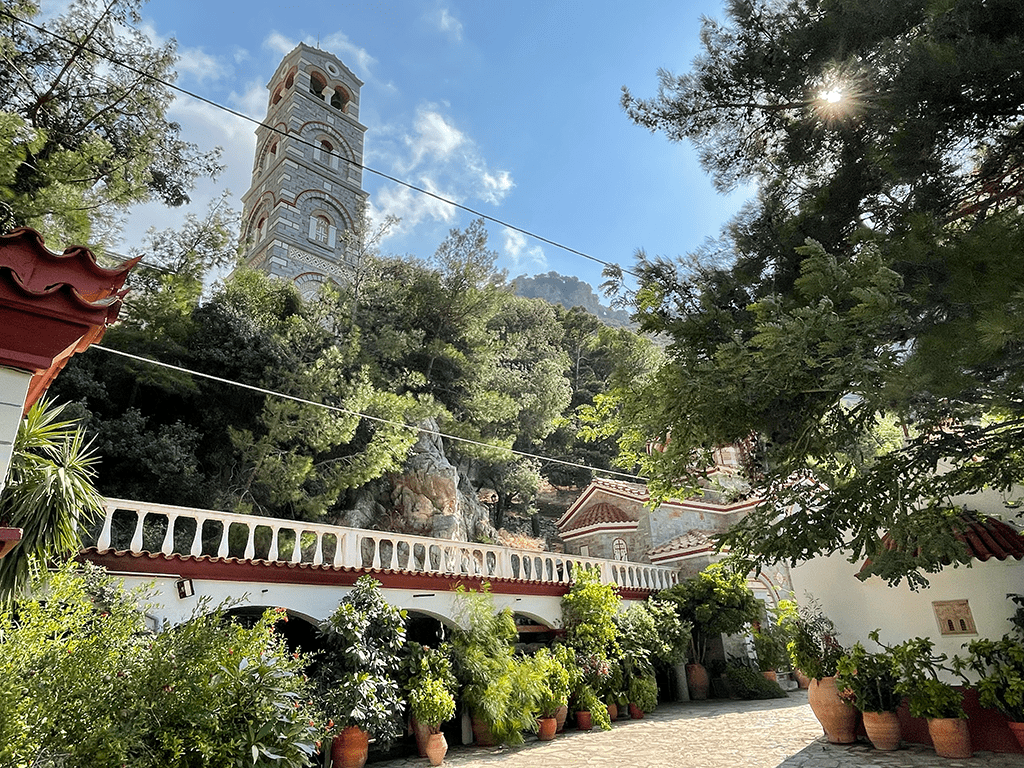
Day 12: Chrysi Island and Ierapetra
In the morning we reach Ierapetra and embark for theisland of Chrissi , 8 km off the coast of Crete. In about an hour, the boat takes us to the island, which is famous for its tropical waters and paradisiacal beaches where the pink sand is intertwined with cedar tree roots. The island is completely uninhabited although there is a taverna where we can eat and a kiosk with services. Boats dock at the jetty on the south coast of the island. On the opposite side of the island is Vlychadia: red, grey and black pebbles reveal Chrissi’s volcanic origin. Further along, at the western end of the island is Kentra, a beach that is always deserted because it is too far away from the pier. Towards the west is Hatzivolakas, bordered by huge cedar trees. The western end where the sand thickens and takes on a darker colour is called Avlaki. On the north coast Belegrina – golden beach – is the most beautiful and popular beach in Chrissi. The water is spectacular, and is coloured in shades of bright blue, emerald green and cobalt blue. The beach is entirely covered with shells of all sizes, and in the easternmost part one can find fossils that are 350,000 to 70,000 years old, dating back to when the island was still submerged in the sea. It is equipped with umbrellas and a small beach bar that is very expensive.
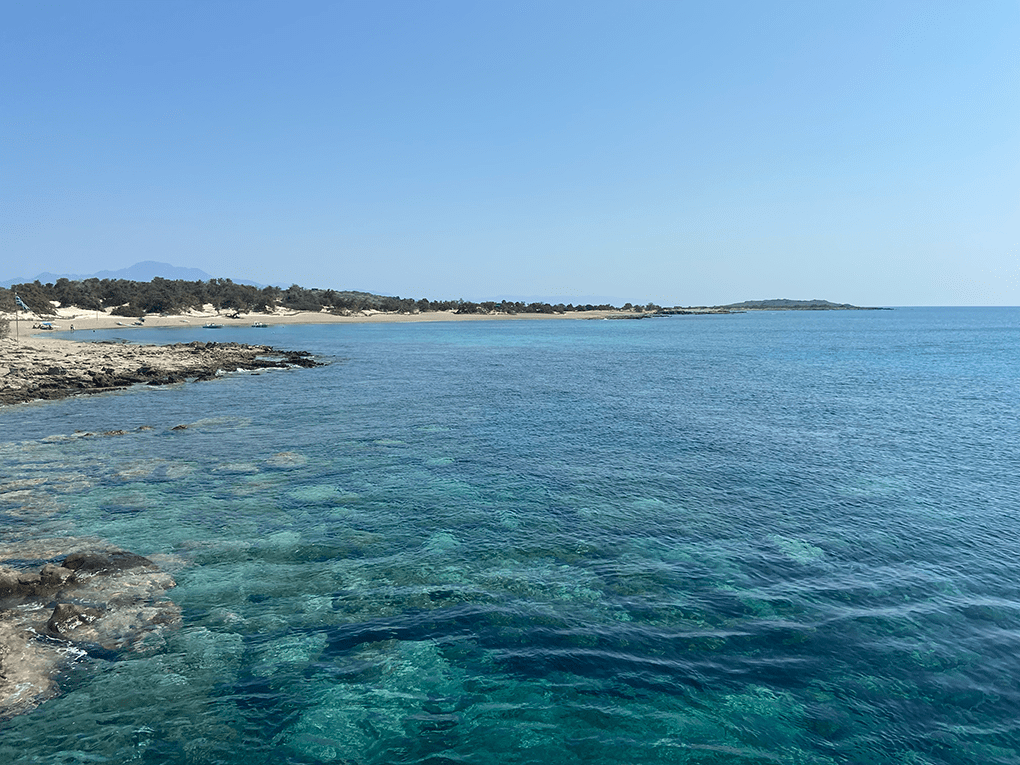
Day 13: Richtis Gorge and Vai Beach
We explore the east coast of the island by trekking to the wild Richtis Gorge: the route runs from the hinterland to the sea, and in this case starting from the village of Exo Mouliana would require at least two hours of walking. We decide to drive up to the Lachana Bridge and continue along the path through dense, almost tropical vegetation until we reach the beautiful waterfall that marks the gorge. The path to the waterfall is not very easy and at times you have to climb rocks and hang from trees to ford the river, but the feeling of wandering through the wilderness is priceless. Once at the waterfall, it is possible to take a refreshing dip in the icy water before continuing on to the sea or back to the bridge. There are also several abandoned but very characteristic stone mills along the path.
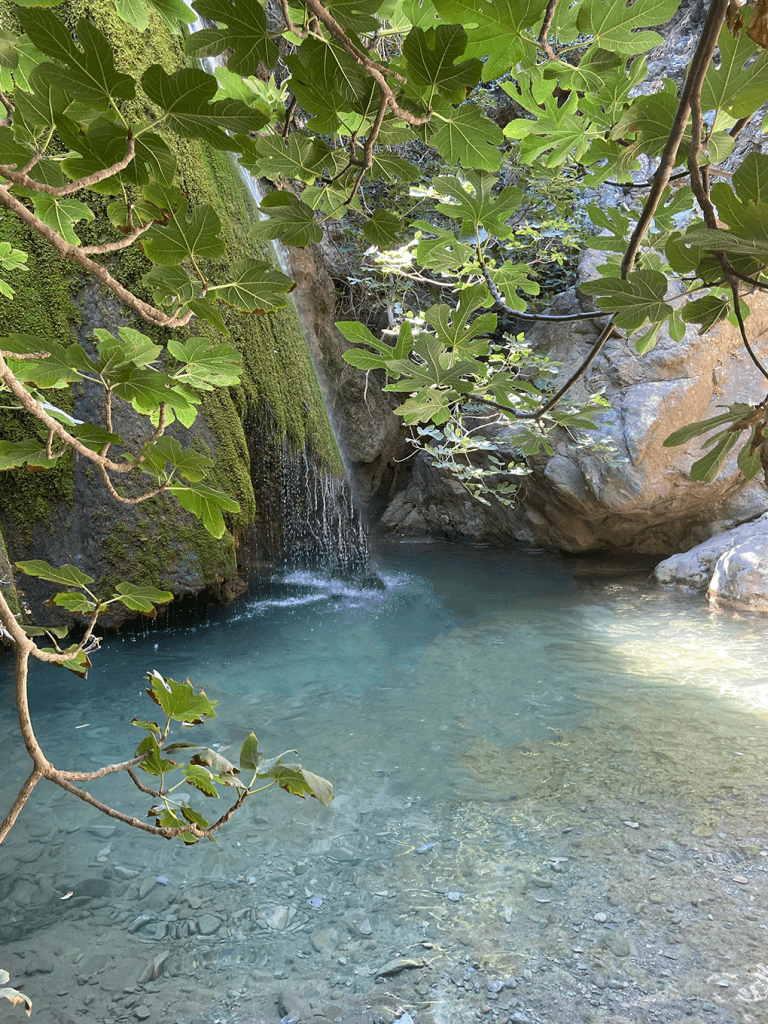
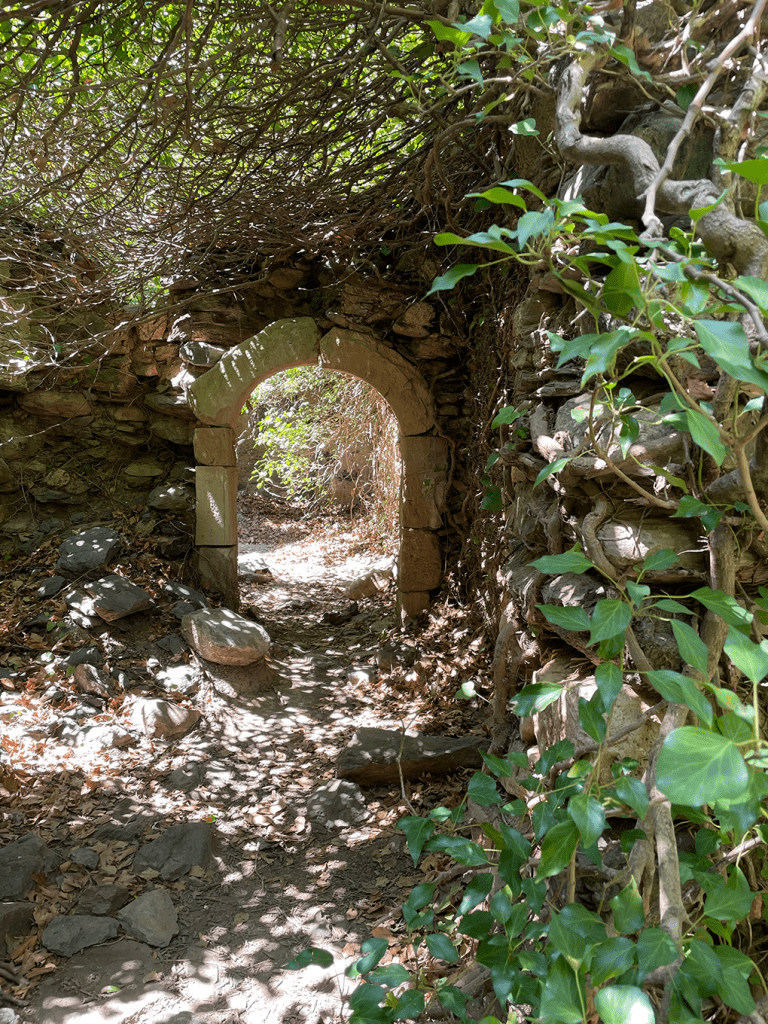
Trips for Trips: to get to Lachana Bridge, follow the signs for the longer road that runs along the main road outside the village. The navigator suggests a road that cuts through the village but ends in such a small, bumpy road that you have to leave the car in the countryside and continue on foot, adding 15 minutes to the route.
In the afternoon, we move on to the famous Vai, considered one of the most beautiful and picturesque beaches on Crete as it is surrounded by the largest palm tree forest in Europe, which grows naturally right down to the beach. With around 6,000 trees, this natural wonder greatly enhances the charm of the sandy beach, giving it an exotic charm and providing a nice area for walking in the shade. In addition, next to the restaurant, a flight of steps leads to a path on the hill from which one can admire the entire coastline.
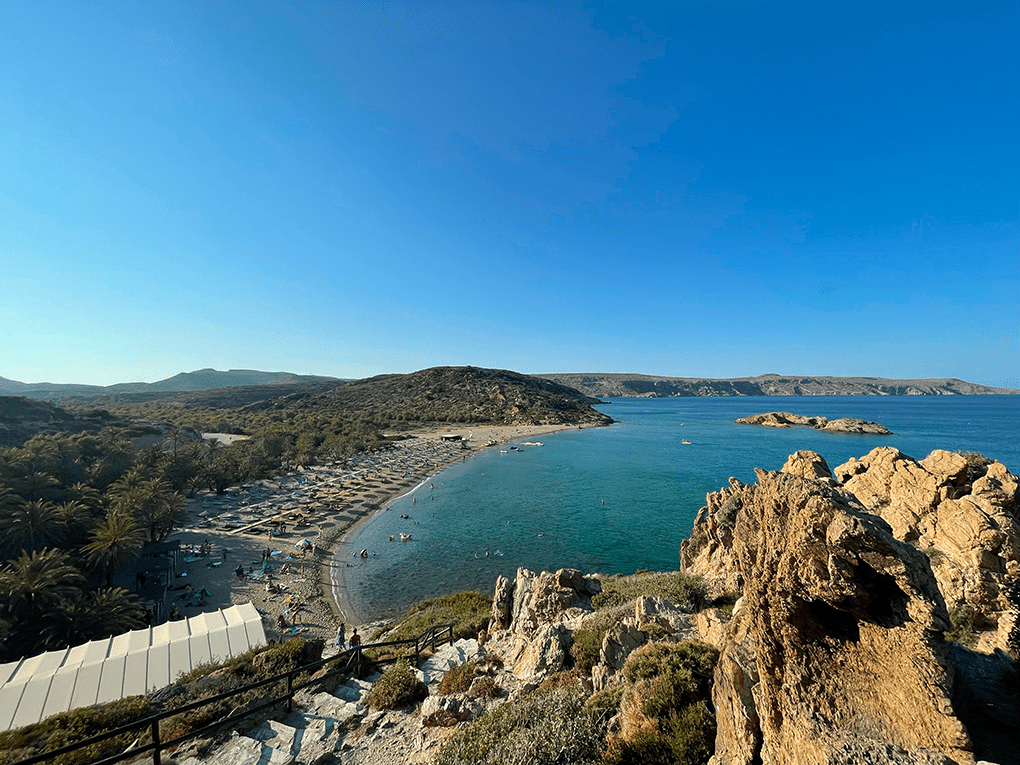
Day 14: Spinalonga Island and Heraklion
We leave the room early in the morning and head for Spinalonga Island, a small fortified island that was once a leper colony. To reach it we have to take the boat but the crossing takes a few minutes. Once disembarked, we find ourselves in front of the ancient gates to the island. From here, people accessed examination rooms where medical personnel decided in which part of the island they would live. At its peak, the leper colony had about 400 inhabitants. Each of them could maintain their own profession and so Spinalonga had businesses and services. The restoration of Spinalonga itself took place at their hands. Walking around the island, we leave the small village, go up the narrow streets and walk around the island. The walk along the sea is very picturesque. Climbing to the top of the mountain, we reach a flat area surrounded by ruined walls. There is a wonderful panorama from here.
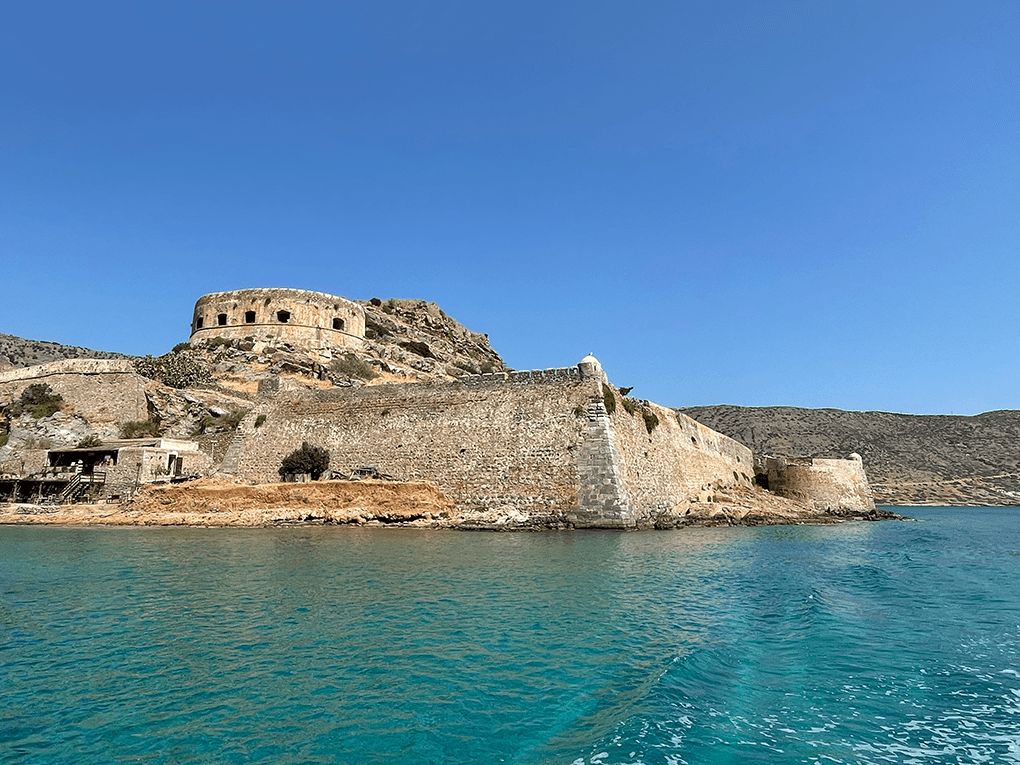
In the afternoon, we move on to Heraklion, the last stop on our trip. We take a walk around the centre and end the evening by having dinner atAvli, a small restaurant tucked away in a courtyard. The place is family-run, and the girl comes to sit at the table to tell us about the menu. Her mother is in the kitchen, her father takes care of the dining room. The dishes are hearty, typical and tasty.
Day 15: Departure
We take another tour of Heraklion, visit the Castello a Mare, a majestic building overlooking the harbour and the nearby Arsenal to end a perfect holiday in a place that enchanted us.
Last modified: 14 June 2025
